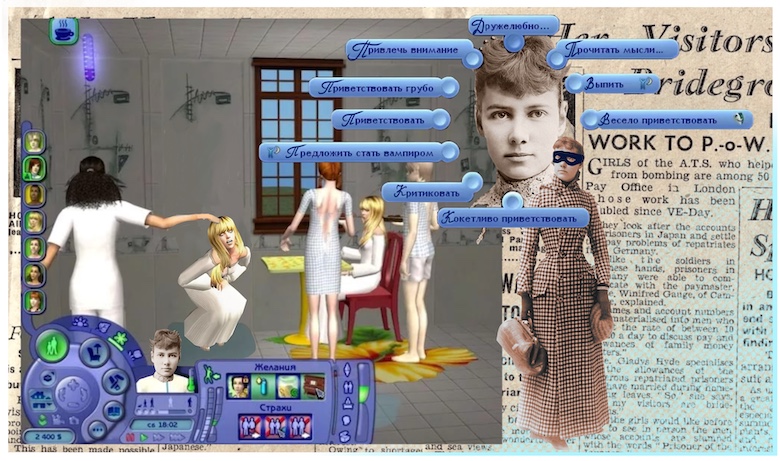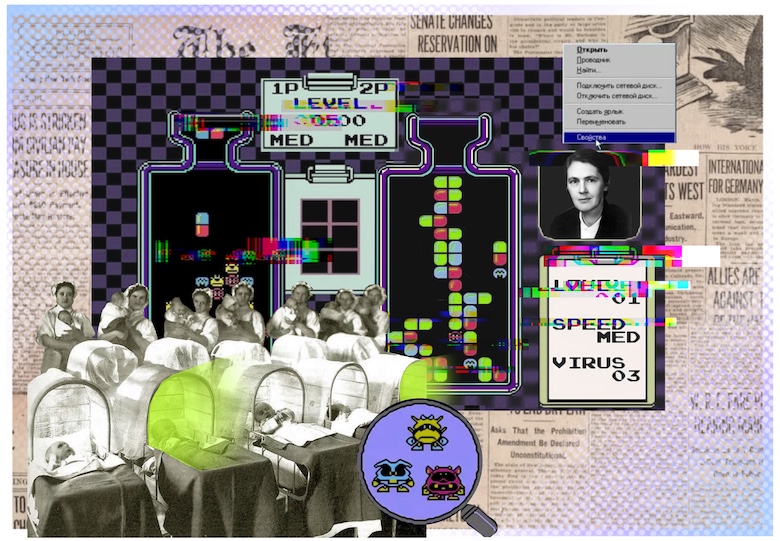
“What to argue, to do!”, “There is no need to dirty paper”, “It's all good only in words” - many people who write more than once had to deal with such a disdainful attitude to their work. But in vain. Sometimes a word is quite an action, or rather an impulse to make significant changes in real life. Printed articles can truly save or destroy the lives of people and corporations, and today we want to share with you the top stories of how publicists from the 1850s to the 2000s changed the world with their pen.
1854, "Reports from the Front": The Story of the World's First War Correspondent

Of course, the transmission of news from the place of armed conflicts existed as long as the conflicts themselves existed, because during the battles the issues of freedom and slavery, life and death were resolved. But it is professional military journalism that has a clear date of origin (1854) and its founding father - British William Howard Russell.
Russell was a native of Dublin, at the age of 20 he started working at the local office of The Times, but three years later the promising, fearless and outspoken journalist was transferred to London. He wrote the first reports from the front during the war between Prussia and Denmark for Schleswig-Holstein in 1850, but it was a trip to the Crimea to cover the course of the grandiose military conflict between Britain, Russia, France, Sardinia and the Ottoman Empire that became decisive in his career.
An important role in this was played by the fact that for the first time a telegraph was installed on the territory of a military conflict, which means that news spread at an unprecedented speed. Before that news and reports had been going on for months, but now new articles appeared the day after the event.
Russell's reports shocked Britain: volunteer soldiers lived in complete unsanitary conditions, most of them died not from wounds received in battles, but from diseases, even before they had time to fight. The huge non-combat losses angered the public - the government received regular harassment from the parliamentary opposition and personally from Queen Victoria, politicians and commanders-in-chief lost their posts (including Prime Minister Lord Aberdeen), and some of them lost their heads. Russell was tried to shut up, threatened, insulted, but he continued to reveal the unattractive truth to the world.
Impressed by Russell's reporting, Florence Nightingale (a nurse of aristocratic descent), together with 38 assistants, formed the first-ever volunteer military hospital, in which proper sanitary conditions and a clear system of care for the wounded were created, due to which, in six months, mortality in hospitals decreased from 42% to 2%. ...
Thanks to Russell's reporting, other changes were implemented - for example, after he spoke about transport problems during the siege of Sevastopol, entrepreneur Samuel Morton Peto initiated the construction of the Balaklava railway. Jackets with raglan sleeves, cardigan sweaters, warm balaclavas that protect the face from the cold - these still actual things are named after the generals and were created for the freezing British soldiers, whose torment was told by the same Russell.
The journalist himself lived a long life (86 years), covered many more military conflicts in Europe, Africa and the United States, was awarded the title of knight and the Royal Order.
1887, Notes of a NOT Crazy: Secret Reporting of Bullying in a Home for the Insane

At the end of the 19th century, women journalists wrote mainly on "girlish" topics: household, beauty, social life ... But not the American Elizabeth Jane Cochran, who later became known under the pseudonym Nellie Bly.
A happy childhood for Elizabeth ended at the age of 6, after the sudden death of her father, a politician. The inheritance was divided between his 15 children (10 of them from their first marriage), so that Elizabeth and her mother were left with only a very modest content, and after the mother's unsuccessful remarriage with subsequent divorce, the situation worsened even more. The girl tried to get a teacher education, but there was not enough money for her studies, and she had to move with her mother to Pittsburgh - it was there that she came across an article in a local newspaper describing women extremely dismissively. She sent an angry letter to the editorial office, which impressed the editor-in-chief so much that he offered her a place on the staff of the newspaper.
Nellie immediately took a non-standard path and began writing on acute social topics: divorce, working women, prostitution. Disguised as a beggar or a factory worker, she infiltrated workshops, slums and questionable establishments on the outskirts. Revealing articles liked the readers, but soon, under pressure from “above”, Nelly had to leave the newspaper, and then she decided to come to New York and by hook or by crook make her way to the newspaper The World to the legendary Joseph Pulitzer.
The very first editorial assignment was very daring: it was necessary to enter a closed institution for the insane under the guise of a madwoman. The girl undertook a thorough preparation: she consulted with doctors, spent hours working out in front of the mirror a terrible laugh and an insane expression in her eyes, stopped washing and brushing her teeth. Finally, dressed in rags, Nellie showed up at the flophouse, where she conducted irrational hostile chatter with her neighbors, making them fear for their lives. She was brought to a medical consultation, at which only one in five doctors doubted her insanity, and the girl was sent to a mental hospital on Blackwell Island.
The hospital was conceived as a modern mental health center, but over time, due to funding problems, it turned into a creepy asylum, the staff of which consisted mainly of former prisoners of a nearby reformatory. "A human rat trap, where it is easy to get, but where it is impossible to get out" - this is what Blackwell called Nellie Bly, spending 10 days in a row there in the status of a patient.
Doctors almost did not visit patients, rude nurses beat, strangled and mocked their wards, food was completely inedible and mostly spoiled, there were two combs per 100 people, and women were often washed with ice water already used. Many of the patients were not insane - among them were, for example, foreign women who simply did not speak English and therefore did not understand at all what was happening. Or, for example, the cook, who gave a blow to the maid, who specially walked on the freshly polished floor in dirty boots, and she, in revenge through a police officer she knew, drove her to Blackwell.
« , , . , , . , , 300 . . , . … , , ...»
After 10 days, Nellie was released (for this she had to involve a lawyer) and wrote an exposing article "Behind the bars of a mental hospital", which, of course, caused a huge resonance and consequences: almost all the staff were fired, sanitary conditions and funding were improved, foreign patients passed repeated examinations with the involvement of translators (and many were recognized as sane), and strict control was established over the institution.
This was far from the last journalistic victory for Nelly - she interviewed many prominent people, including the three first ladies of the United States, and even traveled around the world in 75 days. However, these are completely different stories ...
1961, "The Cure": How Doctors' Publishing Stopped Sales of a Drug That Disfigured 10,000 Children

In 1954, the German pharmaceutical company Chemie Grünenthal created a drug called thaliomide, originally conceived as an anticonvulsant. There were no mortality rates among the animals on which the drug was tested, as well as obvious side effects, so the drug was sent "for trial" to various doctors. Patients taking thaliomide did not notice an anticonvulsant effect, but they said that the drug has a sedative effect and promotes healthy sleep without causing addiction and dependence.
Delighted with the result, representatives of Chemie Grünenthal launched an extensive advertising campaign, emphasizing the safety of overdose, as a result of which the drug went on sale in 46 countries around the world. The only exception was the United States, where the newly-minted head of the FDA, Dr. Francis O'Kelsey, the Germans' argumentation seemed unconvincing: even laboratory mice did not fall asleep after taking thaliomide, and the mention of side effects like peripheral neuritis that had already appeared in letters to the company by that time was not indicated in the application were. They tried to put pressure on the doctor, but she was adamant and required additional research - and thereby saved thousands of lives.
A year after the start of massive sales of the drug in hospitals, the number of children with congenital anomalies increased sharply, and obstetricians in different parts of the world began to study the history of patients, trying to identify something in common. As it turned out, in almost all cases, expectant mothers in the early stages took thaiomide, which since 1958 has been actively promoted as a sedative drug, including helping to prevent morning sickness and toxicosis.
It is not known how many more lives would have been crippled if an article by the German professor Lenz and the Australian doctor McBride had not been published in 1961 in the Welt am Sonntag newspaper, which told the terrible truth about thaliomid. Lenz conducted his own investigation and found that about 40% of newborns exposed to the drug during the developmental stage of the fetus died before their first birthday. Many were born without limbs, with severe internal organ defects and intellectual disabilities.
Raising the documents, Lenz and McBride were able to find out that the creators of thaliomide did not conduct testing on pregnant animals, and therefore the teratogenic effect of this substance (that is, the fact that it contributes to the violation of embryonic development) was not timely identified.
The article made a splash - the press raged, the authorities demanded an immediate withdrawal of the drug, lawsuits rained down on the manufacturing company. However, as a result, the charges against Chemie Grünenthal were dropped, since before the thaliomide story it was believed that the placental barrier completely protects the fetus of a pregnant woman from chemical exposure, and only a few (including the same Francis O'Kelsey) doubted this. So, in theory, any other pharmaceutical company could have replaced Chemie Grünenthal, because they acted within the framework of the existing norms.
After the publication of the article by Lenz and McBride, it was decided to radically change the global testing and licensing system for drugs, including the addition of a mandatory study of the possible impact on fetal development.
Alas, by that time, more than 40,000 people had already received peripheral neuritis, from 8,000 to 12,000 newborns were born with physical deformities, and only half of them did not die at an early age, but still remained disabled for life.
What is noteworthy, at the same time, thaliomide did not become forever a prohibited drug, but all due to the fact that in 1964 in the Israeli hospital Hadassah, Dr. sleep well. To the shock of the doctors, on the eve of the barely alive patient the next day after taking the medicine, not only did not die, but was able to stand up on his own, and soon he was completely cured. After conducting research (under the supervision of WHO), Sheskin achieved an improvement in the condition or complete recovery of 96% of patients, although due to the fear of thaliomide, the drug (with restrictions such as the prohibition for patients to donate blood and sperm) was included in the official recommended list only in 1998 medicines for leprosy, as well as for certain cancers.
1996, "The Nicotine Insider": The First Honest Tale of the Dangers of Tobacco

In 1999, Insider, starring Russell Crowe and Al Pacino, was released and received seven Academy Award nominations, including Best Feature Film. However, with almost the same success, the tape could be considered as a documentary, because everything in it (with the exception of the names of the wife and children of the protagonist) was based on real events of the early 1990s, and the main consultant of the film was the "protagonist" of the story. Dr. Jeffrey S. Wygand.
He worked in the healthcare industry for the first 25 years of his career, and then received an invitation to become vice president of research and development at Brown & Williamson co. - a subsidiary of the powerful corporation British American Tobacco. A financially generous proposal, plus an intriguing and rewarding challenge to develop "safer cigarettes while minimizing the health risk of the smoker," Wygand thought it was a great proposal.
In the next four years, he and his department did manage to develop several innovations, in the image and likeness of which cigarettes from different companies were released in the 2000s. But then, in the 1990s, all the projects of the Wygand division went "on the table", and after that the management completely closed his program, saying that "this could negatively affect sales." In the course of his research, he himself learned more and more unsightly facts about the tobacco industry and even came to the conclusion that in the 20th century, smoking took several times more lives than all the wars of that time.
At the same time, Lowell Bergmann, a producer of the 60 Minutes TV program on CBS, who needed scientific advice, came to him. After talking with him, Wygand decided on a very bold act: he gave an exclusive interview that revealed the secrets of the tobacco business for the first time, including for the first time publicly confirming that tobacco companies use carcinogenic chemicals that cause persistent addiction in smokers. Realizing what a bomb this information is, the channel's management banned the interviews on the air.
However, upon learning of the story, Vanity Fair freelance correspondent Marie Brenner conducted her own investigation, the results of which she used to persuade Wygand, who had doubts about his venture, to give the first interview after the never-released "60 minutes" interview.
Her article "The Man Who Knew Too Much" was published in May 1996. After the publication, the tobacco industry suffered multibillion-dollar losses, and all US tobacco companies were accused by the administration of all 50 US states of "unprecedented manipulation of the consciousness of the national public for more than 50 years" and paid a total of $ 246 billion in fines.
Of course, the tobacco corporations tried to fight back, bombarding Jeffrey and his seven threatening letters, which ultimately led to the latter's divorce from his wife, who could not stand the pressure. They also tried to retaliate with the media and published a 500-page "revelatory" dossier in the press, calling Wygand a "liar, thief, plagiarist, wife abuser and fraudster" even contacting the airline about damaged baggage. But, of course, this did not give the desired effect - the facts set forth in Brenner's article had a scientific background and influenced the lives of millions of people. So, they were not in any comparison with Wygand's "sins".
Not without, of course, and without a trial, during which Jeffrey, being a man of science, was able to prove the veracity of all the information. Subsequently, he founded the Smoke-Free Kids Foundation, which helps implement anti-smoking campaigns, he actively speaks and communicates with children and adolescents, and continues the work that has forever inscribed his name in history.
Marie Brenner, on the other hand, continues a successful journalistic career, she has published several other historically significant publications, such as the article "American Tragedy: The Ballad of Richard Jewell", dedicated to the high-profile case of a security guard who worked at the 1996 Olympics. Jewell managed to evacuate people in time, having noticed a backpack with a bomb, but soon he himself suddenly became the main suspect and became a victim of pejorative harassment from the media. This article was also filmed in 2019 by Clint Eastwood himself.
2006, Italian Passions: a corruption scandal in football

The last article in our collection did not deal with the issues of life and death, but still changed football in the country that adores it.
In 2006, the Italian newspaper La Gazzetta dello Sport published a transcript of telephone conversations between the general director of the Juventus club Luciano Moggi and football officials about the appointment of the "necessary" referees to the matches of his team. For Italian sports fans, the incriminating materials published on the famous pink paper of one of the country's main sports publications came as a shock, especially since this country is very sensitive to football.
At the same time, other Italian sports media surfaced recordings of Moggi's earlier conversations with representatives of other clubs, previously sent to court, but not considered "for insufficient evidence base". Apparently, initially, the police tried to hush up the story so as not to substitute themselves and not break the country's football industry, but after publication in a newspaper with 3 million readers, the case could not but become loud.
Who exactly and how was able to obtain these records has not yet been established, but sports journalists note that many people who participated in this story (but did not suffer in any way) were interested in strengthening the position of the Inter club. And indeed, after a serious blow to the “giants” of Italian football, Inter got out clean and won four subsequent Italian championships.
The Italian national team, which in the same 2006 became the world champion, did not suffer either, although many considered it inappropriate to announce the decision to disqualify Juventus on the day when the Italian national team was supposed to play in the semifinals of the championship with the German national team.
The publication led to the removal from their posts of the country's top football officials - for example, the president of the Italian Football Federation Franco Carraro and vice-president Innocenzo Mazzini resigned, while Carraro paid a fine of 80,000 euros, and Mazzini was suspended from football for life. Also, the director of Juventus, Luciano Moggi (who in addition received 5 years and 4 months in prison for corruption actions) and the executive director of Juventus, Antonio Giraudo, were also suspended for life.
The Regina manager paid a fine and was suspended from football for several years, similar sanctions were imposed on referee Massimo de Santis and (already former) head of the Italian National Professional Football League Adriano Galliani.
In terms of the consequences for clubs as a whole, the original court order for the Italian giants AC Milan, Fiorentina and Lazio should have been relegated to a lower league, but on appeal they were able to challenge this, and ended up in Serie B only Juventus went down. The clubs also lost their championship titles, the right to participate in the Champions League and the UEFA Cup, and had to play one or more home games without spectators. Of course, history has led to numerous transfers of players to other clubs.
So one article permanently changed the balance of power and, accordingly, the history of Italian football.
Let's go back to the present
We can do without lengthy conclusions; We will simply invite those who believe that one article can change the world to participate in our TechnoText-2020 competition .

And yes, tell us, were there any articles that have personally influenced your life? Or maybe you would like to share articles that deeply impressed you?